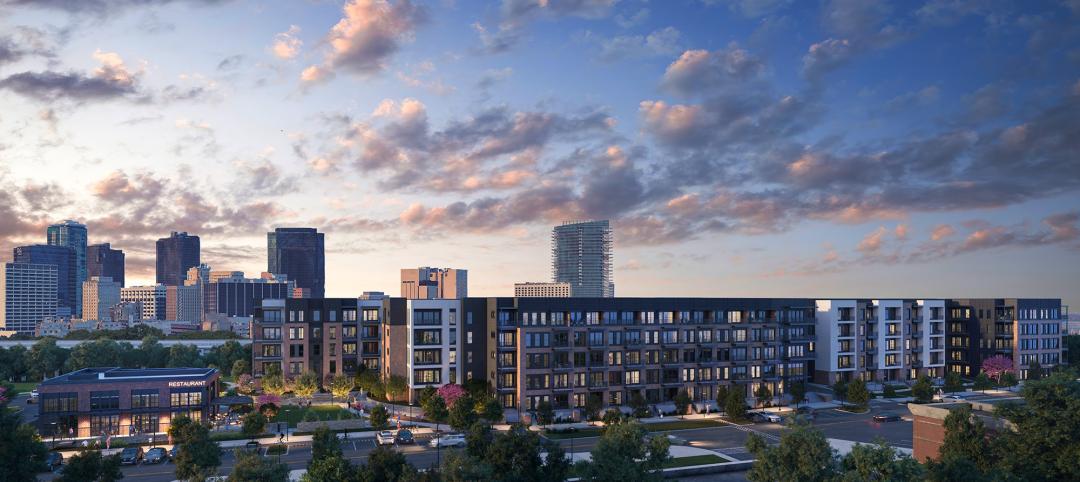With 528 buildings totaling 112.5 million sf, Los Angeles topped the EPA's ranking of the U.S. metropolitan areas with the most Energy Star certified buildings in 2012. Rounding out the top five are Washington, D.C. (462 buildings); Chicago (353); New York (325); and Atlanta (304).
In 2012, more than 20,000 Energy Star certified buildings across America helped save more than $2.7 billion in annual utility bills. The cumulative number of Energy Star certified buildings has increased by more than 24 percent compared to last year, representing more than 3 billion square feet of floorspace nationwide. In 2012 alone, more than 8,200 buildings earned EPA’s Energy Star certification.
Phoenix broke into the top 10 for the first time, with 202 buildings. Boston, a newcomer to the list last year, held on to 10th place, with 11th place Philadelphia not far behind. Seventh-place Houston, with 241 buildings, is home to one in particular that stands out: Phoenix Tower, a 34-story office building, has earned EPA’s Energy Star 14 times—more than any other building in America.
Here are the top 25:
1. Los Angeles - 528 buildings
2. Washington, D.C. - 462
3. Chicago - 353
4. New York - 325
5. Atlanta - 304
6. San Francisco - 291
7. Houston - 241
8. Dallas-Fort Worth - 214
9. Phoenix - 202
10. Boston - 188
11. Philadelphia - 174
12. Denver - 161
13. Cincinnati - 137
14. Charlotte - 133
14. Minneapolis-St.Paul - 133
15. San Diego - 123
16. San Jose - 114
17. Seattle - 108
18. Miami - 104
19. Detroit - 100
20. Sacramento - 97
21. Indianapolis - 91
22. Albuquerque, N.M. - 89
23. Kansas City, Mo. - 82
23. Portland, Ore. - 82
24. Riverside, Calif. - 69
25. Virginia Beach, Va. - 67
Download a PDF of the full list.
Related Stories
Mixed-Use | Jan 19, 2024
Trademark secures financing to develop Fort Worth multifamily community
National real estate developer, investor, and operator, Trademark Property Company, has closed on the land and secured the financing for The Vickery, a multifamily-led mixed-use community located on five acres at W. Vickery Boulevard and Hemphill Street overlooking Downtown Fort Worth.
Modular Building | Jan 19, 2024
Building with shipping containers not as eco-friendly as it seems
With millions of shipping containers lying empty at ports around the world, it may seem like repurposing them to construct buildings would be a clear environmental winner. The reality of building with shipping containers is complicated, though, and in many cases isn’t a net-positive for the environment, critics charge, according to a report by NPR's Chloe Veltman.
Sponsored | BD+C University Course | Jan 17, 2024
Waterproofing deep foundations for new construction
This continuing education course, by Walter P Moore's Amos Chan, P.E., BECxP, CxA+BE, covers design considerations for below-grade waterproofing for new construction, the types of below-grade systems available, and specific concerns associated with waterproofing deep foundations.
Sponsored | Performing Arts Centers | Jan 17, 2024
Performance-based facilities for performing arts boost the bottom line
A look at design trends for “budget-wise” performing arts facilities reveals ways in which well-planned and well-built facilities help performers and audiences get the most out of the arts. This continuing education course is worth 1.0 AIA learning unit.
Adaptive Reuse | Jan 12, 2024
Office-to-residential conversions put pressure on curbside management and parking
With many office and commercial buildings being converted to residential use, two important issues—curbside management and parking—are sometimes not given their due attention. Cities need to assess how vehicle storage, bike and bus lanes, and drop-off zones in front of buildings may need to change because of office-to-residential conversions.
MFPRO+ News | Jan 12, 2024
Detroit may tax land more than buildings to spur development of vacant sites
The City of Detroit is considering a revamp of how it taxes property to encourage development of more vacant lots. The land-value tax has rarely been tried in the U.S., but versions of it have been adopted in many other countries.
MFPRO+ News | Jan 12, 2024
As demand rises for EV chargers at multifamily housing properties, options and incentives multiply
As electric vehicle sales continue to increase, more renters are looking for apartments that offer charging options.
Student Housing | Jan 12, 2024
UC Berkeley uses shipping containers to block protestors of student housing project
The University of California at Berkeley took the drastic step of erecting a wall of shipping containers to keep protestors out of a site of a planned student housing complex. The $312 million project would provide badly needed housing at the site of People’s Park.
Apartments | Jan 9, 2024
Apartment developer survey indicates dramatic decrease in starts this year
Over 56 developers, operators, and investors across the country were surveyed in John Burns Research and Consulting's recently-launched Apartment Developer and Investor Survey.
K-12 Schools | Jan 8, 2024
Video: Learn how DLR Group converted two big-box stores into an early education center
Learn how the North Kansas City (Mo.) School District and DLR Group adapted two big-box stores into a 115,000-sf early education center offering services for children with special needs.
















